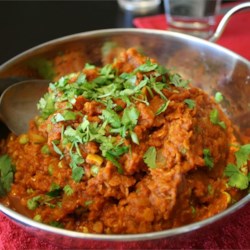 |
| Photo Credit: Emily Barney via Compfight cc |
I discovered how to make posole stew while living in Medanales, NM, in the summer of 2011. Posole or pozole is the Spanish word for hominy. In New Mexico posole stew is traditionally prepared at New Years with the leftover Christmas ham. In Lexington, KY, Mexican restaurants usually serve pozole only on weekends, and it consists of a similar but much spicier soup made with pork and ground red chile paste rather than with green chiles. This is my favorite soup.
- 1 Tsp oil
- 1 large onion
- 1 quart chicken or vegetable broth
- 1 can hominy, drained
- 1 large can chopped green chiles (or better fresh roasted chiles)
- 1 cup diced cooked ham
- 1 Tsp oregano
- 1 clove garlic
Sauté the onion in the oil in a large pan.
When the onions are caramelized or translucent (depending upon your taste), add the broth, hominy, chiles, ham, oregano, and garlic. Bring to boil.
Reduce the heat and simmer for 20 minutes.
This dish often tastes better the next day after it has set and seasoned a bit in the refrigerator.
A small bowl of posole -especially if with limited amounts of hominy- can make for a 200 calorie lunch or dinner. One cup of hominy has 119 calories by itself.
DIETS:
Diabetic: yes
Gluten Free: yes
Nightshade Family Free: yes* (but only if you leave out the green chiles)
Paleo: yes* (but only if you leave out the main ingredient, hominy)
SugarBusters: yes
Sugar Free: yes
Vegan: yes* (but only if you use vegetable broth and leave out the ham)
Vegetarian: yes* (but only if you use vegetable broth and leave out the ham)
Wheat Free: yes
200 Calories or Under: yes
Notice: Be sure to check with your doctor and nutritionist about the safety of any eating plan for you. Also, check ingredients as different brands and products may have different ingredients or have changed them since this post. Some calories are estimates based on packaging.













.JPG)


.JPG)





